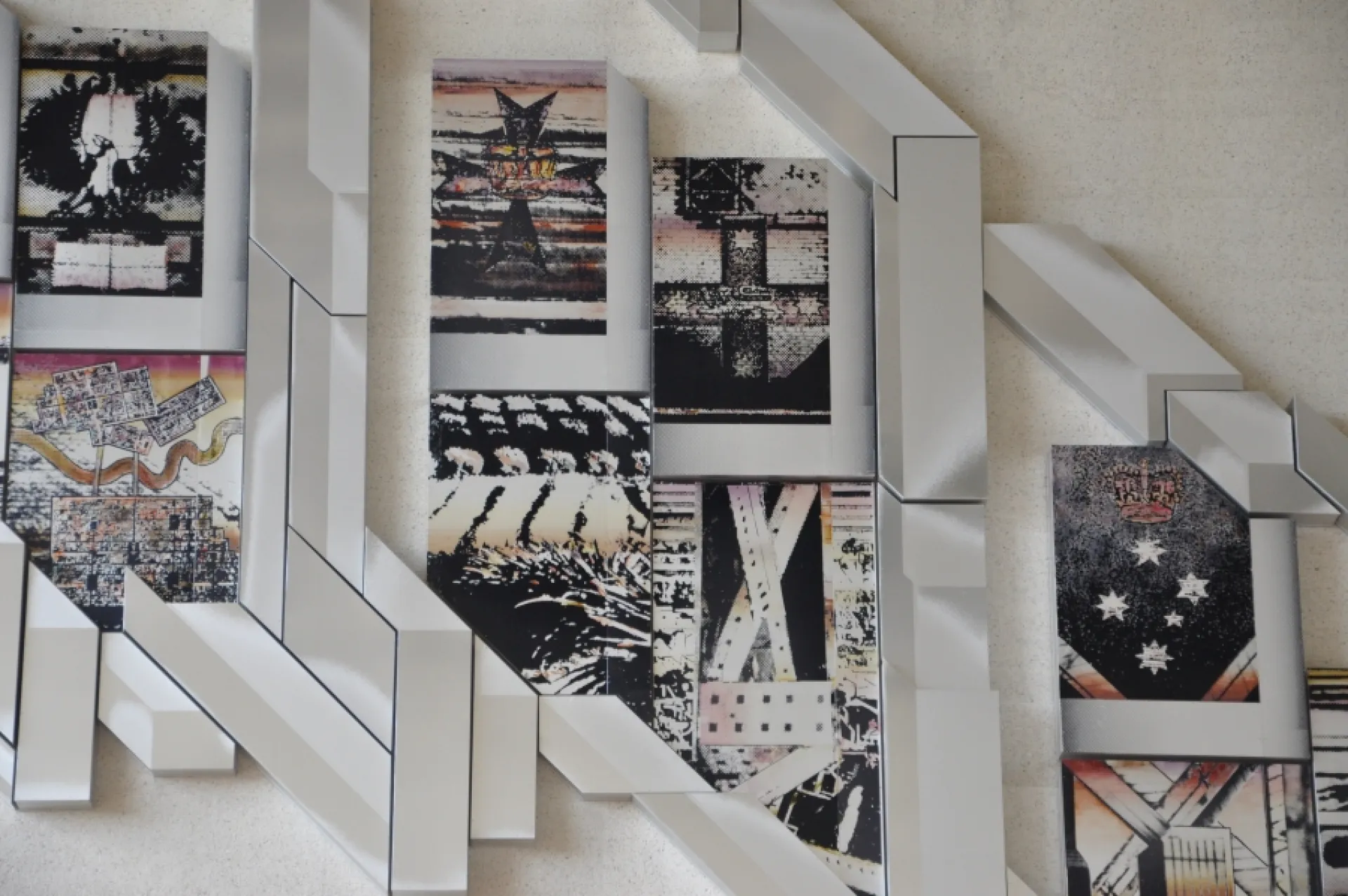Commissioned for the opening in 1980, collection of the High Court of Australia

The States Wall Mural, in six sections, each with two panels, contains the emblems of the states and images representing regional economic activities. The panels symbolise the role of the states in the Australian federation and the significance of the High Court of Australia at the apex of the Australian judicial system. The artist Jan Senbergs, provided the following interpretation of the work (from left to right):
- panel 1 represents Western Australia: the black swan over motifs based on the Pilbara Range, mining, and the vastness of the land
- panel 2 represents South Australia: the black and white Piping Shrike over motifs of Colonel Light, the founder of the settlement of Adelaide, and architecture in Adelaide
- panel 3 represents Queensland: the Maltese Cross and the Crown over motifs of tropical vegetation, plantations and rural industry
- panel 4 represents New South Wales: the Cross of St George and the Lion of England over motifs of the populace, suburbs, and industrial structures
- panel 5 represents Victoria: the Crown and the constellation the Southern Cross, over motifs of commerce and industrial landscapes
- panel 6 represents Tasmania: the Lion of Tasmania over motifs of the sea, horizon, the island, and the timber industry.
Patrick McCaughey has described the panels as emblems on top of a representative landscape or subject – the 'essentially emblematic panels are carried to the viewer by the bristling drama of the frame, which animates what otherwise might have been a merely dutiful wall'.
Elsewhere in the Court building in Canberra, State badges can be seen in the shield in the Commonwealth Coat of Arms on the glass façade above the main entrance and in Courts 2 and 3, and in Court 1 in the woven tapestry. The Royal Coat of Arms for the United Kingdom on the High Court's rear façade signifies the reception of the British common law in Australia and the former right of appeal to the Privy Council in England. The commencement of the Australia Acts in 1986 confirmed the High Court of Australia as the final court of appeal, and that no appeals could be taken from Australian courts to the Privy Council.
Jan Senbergs is a Melbourne-based painter and printmaker. He was born in Latvia in 1939 and migrated to Australia in 1950. Died, February, 2024. His works, which often have dark themes focusing on industrialised landscapes, are in many major galleries in Australia and overseas. He has won many awards, including the William Dobell Drawing Prize three times (1993–95). He was a member of the Visual Arts Board of the Australia Council (1984–87), a Trustee of the National Gallery of Victoria (1984–89) and in 1989 was the Visiting Professor, Chair of Australian Studies at Harvard University, Boston, USA.
In 1993 the Heide Museum of Modern Art in Melbourne staged a major Senbergs survey exhibition, Imagined Sites – Imagined Realities and in 2008 the Art Gallery of New South Wales surveyed the development of his career over 25 years in the exhibition Jan Senbergs – from Screenprinter to Painter.
In the late 1970s the Public Arts Committee of the Visual Arts Board nominated Jan Senbergs as one of Australian artists whose work should be considered for the High Court. The Constitution Wall and States Wall mural is Senbergs’ largest commission and has been described as 'by far the most important work of art in the High Court'.